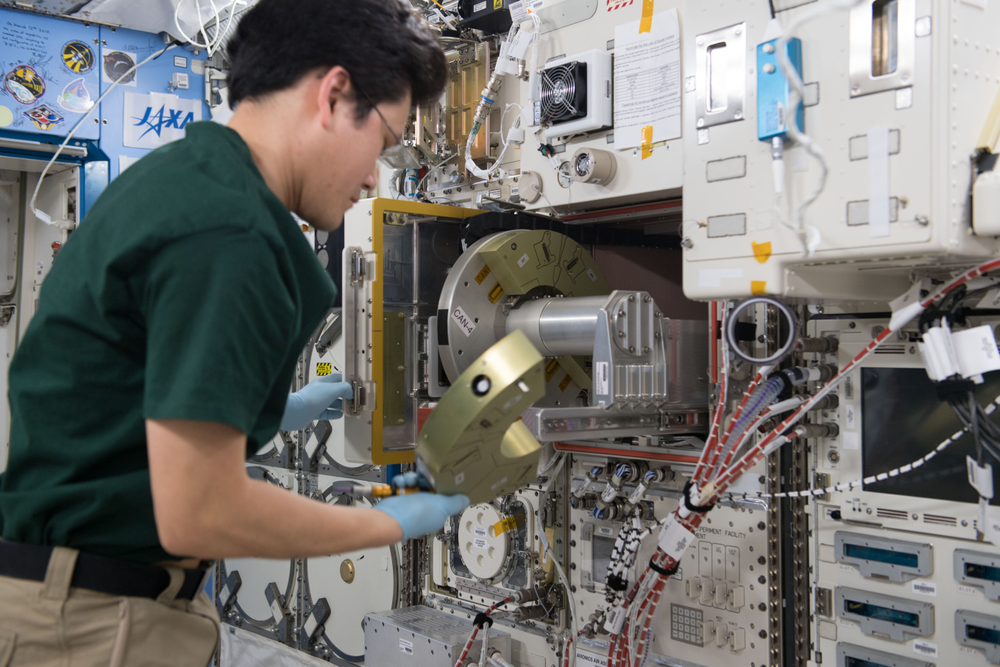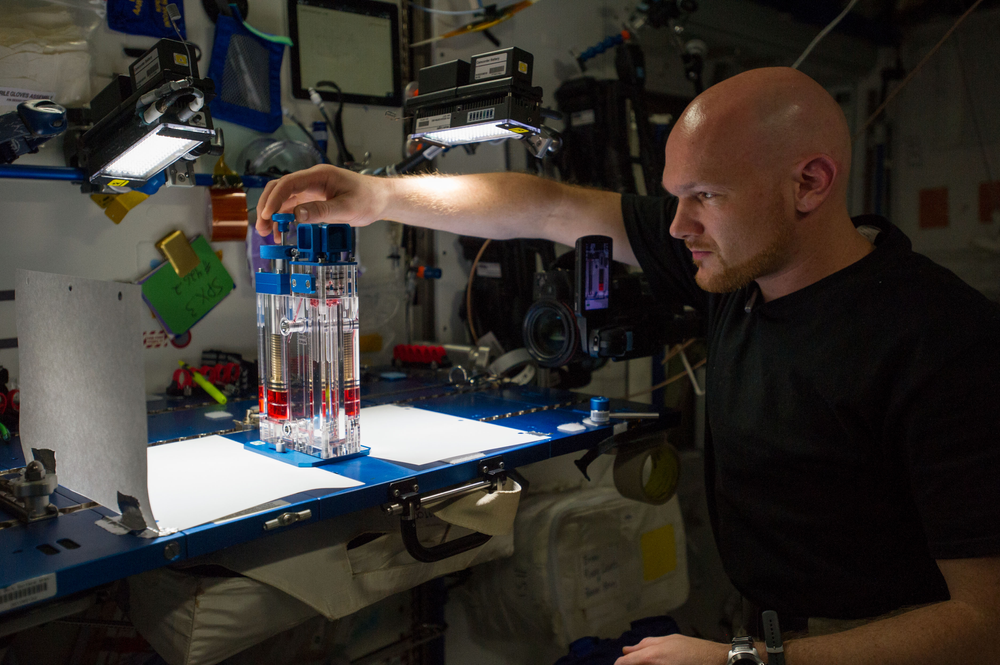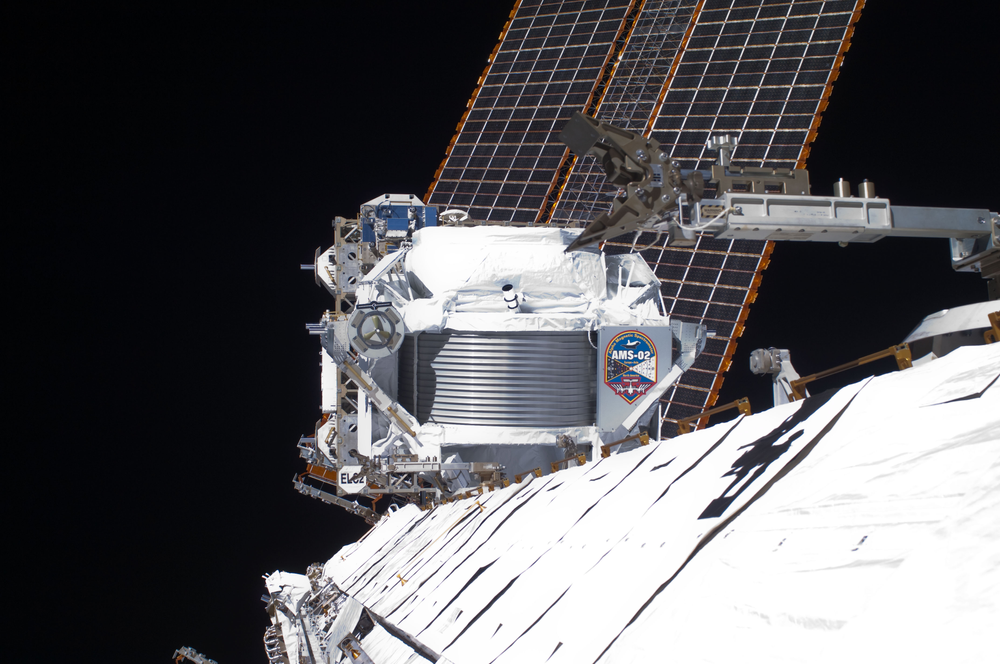Station Science Top News: Nov. 17, 2023
JAXA (Japan Aerospace Exploration Agency) researchers discovered that mice lacking the protein Nrf2 showed signs of inflammation and expression of coagulation factors in microgravity, suggesting an increased risk for blood clots, anemia, and organ damage. These results indicate that improving Nrf2 activity could help alleviate weakening of the immune system that occurs during spaceflight.
The Nrf2 protein regulates the transcription of genes that make antioxidants and help maintain the immune system. JAXA’s Mouse Habitat Unit-3, also known as Mouse Stress Defense, sent to space mice genetically modified for either a loss or gain of Nrf2 function to examine this protein’s potential for mitigating the stressors of spaceflight. Insight from the investigation also could help scientists to understand oxidative and mechanical stresses on Earth and assess how Nrf2 might protect against a wide range of diseases that these stresses cause.

A timelapse view of Flight Engineer Norishige Kanai installing the Mouse Habitat Unit (MHU) Interface (I/F) Units in Cell Biology Experiment Facility (CBEF) Incubator Units (IUs). Photo was taken in the Kibo Japanese Experiment Pressurized Module (JPM). Credit: JAXA (Japan Aerospace Exploration Agency)/Norishige Kanai
***
Results from processing of video data acquired from 2010 to 2016 show that, despite increased container complexity, models adequately predict liquid flow for various types of containers and flow regimes. Such predictions are critical to the operation of systems that control the movement of fluids and the separation of fluids and gasses (bubbles) for key processes such as water purification, fuel storage, and general liquid transport aboard spacecraft.
Researchers analyzed data from the Capillary Flow Experiment-2, which studied wetting, or the ability of a liquid to spread across a surface, and its effect over time in containers of different shapes. The ability to predict how this and related processes occur supports improved design of systems to process liquids aboard spacecraft for fuel, thermal control, and water treatment.

A close-up view of the Capillary Flow Experiments-2 Vane Gap-1 (CFE-2 VG1) vessel mounted on the Maintenance Work Area (MWA). Perforated vane is in a 180-degree position and the test fluid (silicone oil with red dye) can be seen in the test chamber.

ESA (European Space Agency) astronaut Alexander Gerst, Expedition 40 flight engineer, conducts a session with the Capillary Flow Experiment (CFE-2) in the Harmony Node 2 of the International Space Station. Credit: ESA/Alexander Gerst
***
Researchers report the latest measurements from AMS-02, including new phenomena that cannot be explained by current cosmic ray models. One is an excess positron signature that could be due to annihilation of dark matter particles, acceleration of positrons to high energies, or interactions of nuclei with interstellar gas, but these predictions all differ from current models. Cosmic rays pose a risk to crew members traveling to Mars or other destinations. By improving understanding of where cosmic rays come from and how they move through space, these observations could help improve safety on future missions.
AMS-02, the largest and most advanced magnetic spectrometer in space, has operated continuously since May 2011. By the end of 2019, it had recorded more than 150 billion cosmic ray events and measured with high precision the flow of cosmic protons, antiprotons, electrons, and positrons as well as ions of He, Li, Be, B, C, N, and O. Researchers predict that additional data from AMS eventually could lead to better understanding of the origin of the positron excess observation.

A view of the Alpha Magnetic Spectrometer-02 (AMS-02) on the S3 Truss. Image was taken during a spacewalk on Expedition 27 and STS-134. Credit: NASA/Andrew Feustel
***
The International Space Station Program team conducted outreach at the Conference for the Advancement of Science Teaching (CAST), one of the nation’s premier science education conferences attended by nearly 6,000 teachers and science advocates. This year, the three-day event took place at Houston’s George R. Brown Convention Center. Over 300 attendees took pictures with the photo booth and the team handed out 250 graphic novels, 225 activity books, and hundreds of stickers.








